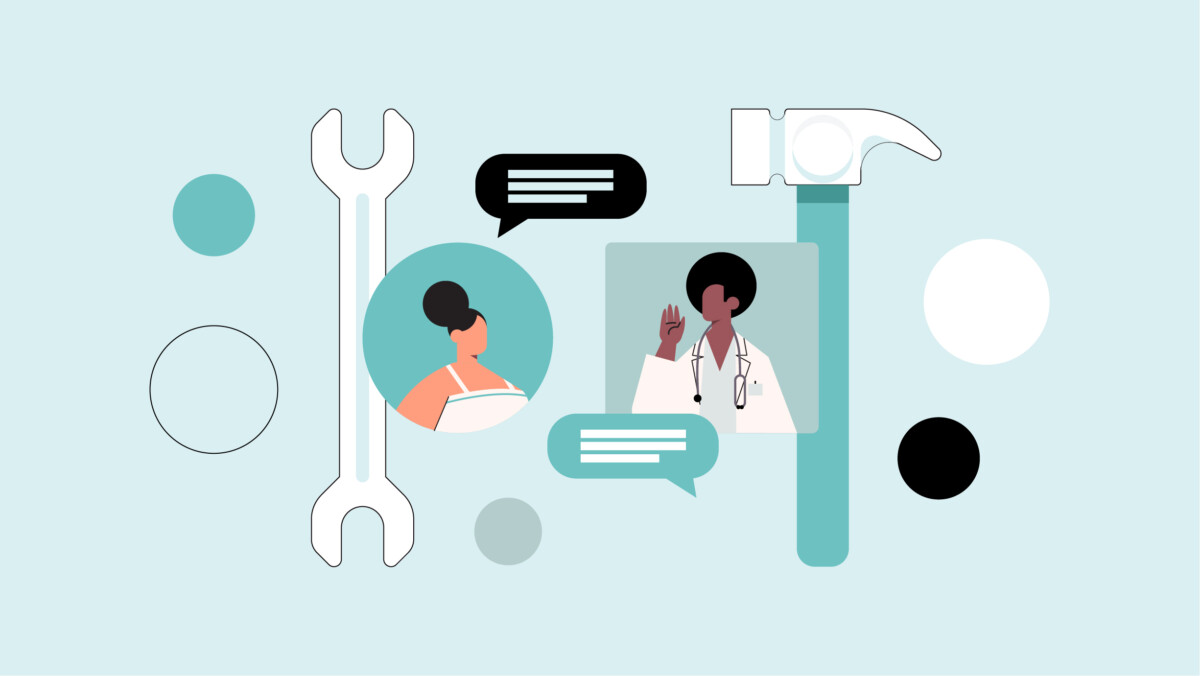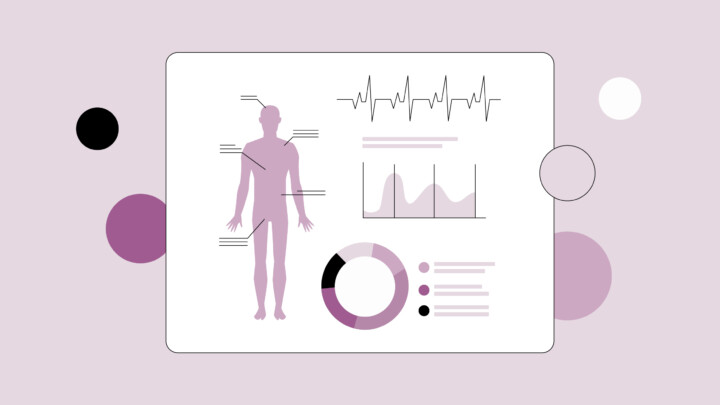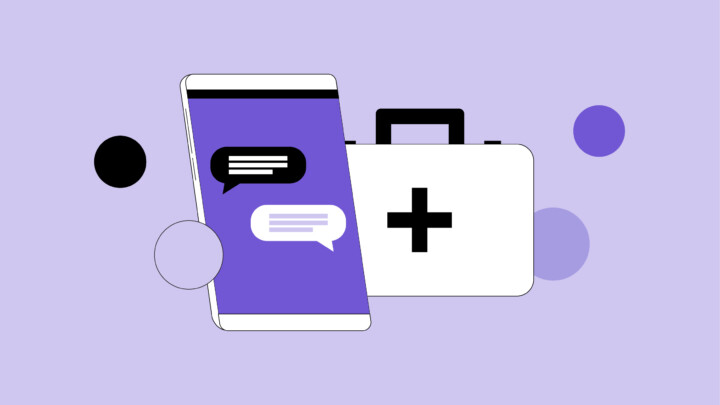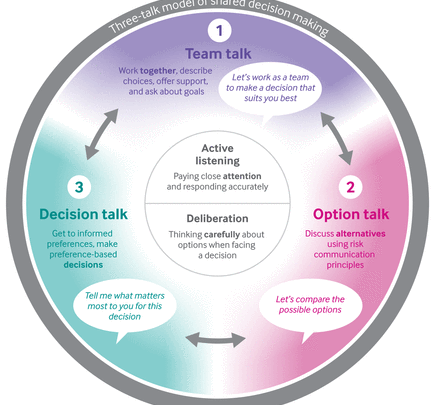
Effective patient communication forms the cornerstone of modern healthcare delivery, directly influencing clinical outcomes, patient trust, and the overall quality of care. As physicians navigate an increasingly complex healthcare landscape, the ability to communicate clearly and compassionately with patients has become more critical than ever.
Patients today expect instant, accessible communication channels that accommodate their busy schedules and preferences. Yet many healthcare professionals struggle to balance patient engagement with their busy workloads. Patient communication tools (including telehealth, patient portals, reminders, message apps, and more) have emerged as essential solutions, improving doctor-patient communication, streamlining care coordination, and fostering healthier, better-informed patient communities. But with so many tools available, which is the best for physicians and their patients?
This article shares verified physician insights, poll data, and comments directly from the Sermo community on the best tools and practices for impactful communication in the modern age.
Importance of effective patient communication
Successful communication in a care setting ensures that patients understand their diagnoses, treatment plans, and care instructions, which directly leads to better adherence and self-management. A meta-analysis of 127 studies found that patients of physicians with poor communication skills are subject to a 19% higher risk of treatment non-adherence compared to doctors who communicate well.
Strong patient-provider partnerships built on empathy and openness foster trust, help clarify expectations, and reduce misunderstandings during care transitions. Involving patients in decision-making and tailoring discussions to their cultural and linguistic needs further empowers them to participate actively, improving engagement and outcomes.
Studies show a strong positive correlation between a patient’s sense of safety during hospitalization and their access to information, empathetic interaction, and trust in medical staff; factors that contribute significantly to care quality and satisfaction.
Patients expect instant, around-the-clock communication options. By integrating robust digital communication tools such as patient portals, messenger apps, and telehealth with EHR platforms, healthcare providers can access patient information instantly, enabling informed clinical decisions and faster care coordination.
Patient teach-back
Employing teach-back methods is vital for confirming patient comprehension and ensuring critical information is understood. 95% of studies using teach-back reported positive outcomes—including significant improvements in patient knowledge, comprehension, and adherence to self-care practices across diverse conditions such as diabetes, heart failure, and asthma. After providing essential instructions, asking patients to repeat back their understanding in their own words identifies gaps requiring clarification. This technique proves particularly valuable for medication instructions and post-procedure care.
The above methods enable physicians to communicate with patients more quickly and effectively. Current means of communication are important for patient contact, and they must be used to give talks and provide guidance on diseases,” says an internal medicine physician on Sermo.
Patient communications tools for physicians in 2025
Modern healthcare practices benefit from specialized platforms designed specifically for patient engagement and provider-patient communication. Below are several tools for physicians to consider:
Sermo Mobile
Sermo Mobile is a leading solution for physicians seeking secure, flexible patient communication outside of traditional clinical settings. Our patient calling tool enables direct calling from anywhere, allowing physicians to maintain a professional presence while protecting their privacy during personal time. Key features include international calling capabilities, encrypted communication, and direct integration with the Sermo community, eliminating the need for additional apps, accounts, or subscriptions. Sermo Mobile displays the caller ID as your clinic or office number, boosting answer rates and ensuring your personal details remain protected. It’s also free for all Sermo members, with no upsells or hidden fees.
Among physicians using Sermo Mobile, 25% appreciate the flexibility of calling from anywhere, while 19% value both maintaining professional presence and enhanced privacy and security features. An ophthalmology practitioner from the USA expands: “Privacy for physicians, especially outside of working hours, is essential. By using tools such as the Sermo app, it is possible to balance more personalized patient care with the personal life of healthcare professionals.” A pediatrician from Australia adds, “Sermo Mobile is a safe and effective tool. Ensure that sometimes a quick phone call doesn’t become a Telehealth consultation!”
Ready to streamline your patient communication? Join Sermo to get free access to Sermo Mobile, plus access to our global physician community, paid surveys, clinical insights, and more.
PerfectServe
PerfectServe delivers enterprise-level communication capabilities for large health systems and multi-specialty practices. This comprehensive healthcare communication platform manages appointment scheduling, on-call notifications, and patient messaging through a centralized interface. Advanced integration with major EHR systems ensures seamless information flow, while sophisticated routing efficiently directs patient inquiries to the appropriate providers.
Telmediq
Telmediq specializes in secure, HIPAA-compliant messaging between care teams and patients, emphasizing speed and efficiency. This communication tool in healthcare streamlines urgent patient inquiries and non-emergency follow-ups, reducing phone volume while maintaining responsiveness. Real-time message routing ensures timely responses, while automatic escalation protocols guarantee urgent matters reach appropriate clinicians.
Optum (previously Change Healthcare)
Optum operates as a comprehensive healthcare ecosystem that simultaneously addresses communication, billing, and care coordination. This patient communications platform integrates deeply with existing healthcare infrastructure, providing seamless data flow across clinical and administrative systems. Patient communication tools are a valuable addition for large health systems that have already invested in this type of ecosystem.
Relatient
Relatient focuses specifically on patient engagement through integrated communication channels and appointment reminders. This healthcare communication platform excels at reducing no-shows through personalized appointment reminders while gathering patient satisfaction data that drives quality improvement initiatives. Transparent pricing scales with practice size, making this tool accessible to practices at various growth stages.
RXNT
RXNT delivers integrated pharmacy communication and prescription management designed to improve medication adherence and safety. This healthcare communication tools platform connects directly to pharmacy systems, enabling real-time prescription status updates to patients. Automated refill reminders can reduce missed doses and hospitalizations related to medication non-compliance, directly improving patient safety outcomes.
For more information on the best telemedicine tools, see Sermo’s guide here.
5 Benefits of effective patient communication
Implementing patient communication strategies leads to measurable benefits that extend beyond improved patient outcomes to operational efficiency and clinic revenue.
Improved patient-provider interactions
When physicians employ effective communication skills, patient interactions become more meaningful and therapeutic. In fact, physician communication training increases patient adherence by 1.62 times. Patients feel genuinely valued and respected, transforming routine clinical encounters into opportunities to build trust. This improved dynamic enhances clinical assessment accuracy, as patients share more complete information openly. Research demonstrates that quality communication improves patient-centered health outcomes among older patients and patients with cancer.
Increased patient satisfaction
Patient experience and satisfaction are directly correlated with effective communication. When patients understand their conditions, treatment plans, and expected outcomes, satisfaction scores rise significantly. Studies show that patients of highly empathetic doctors have better control over chronic conditions like diabetes and lower cholesterol levels. Empathy increases patient satisfaction, improving survival rates and medication adherence while reducing hospital readmissions.
Patient communication platforms enabling proactive outreach demonstrate attentiveness and care. Practices leveraging these tools report higher satisfaction scores, improved online reviews, and increased patient retention. A family medicine physician from Mexico states, “I believe that accessing a doctor through technology is a viable option for patient follow-up.”
Better patient safety
Miscommunication represents a leading cause of medical errors and adverse events. Clear, confirmed communication about medications, allergies, treatment plans, and follow-up instructions prevents costly mistakes. When patients understand their role in their care, they become active safety participants, catching errors and reporting concerning symptoms.
Fewer patient complaints and readmissions
Effective communication directly reduces preventable readmissions and patient complaints. Practices implementing effective communication strategies report 15-20% reductions in readmission rates, translating to substantial cost savings and better patient experience.
When discharge instructions are clearly communicated and understood, patients comply more consistently with post-discharge care. Proactive follow-up communication identifies emerging issues before they escalate into serious problems requiring readmission. A GP from India adds: “Telehealth apps contribute to better patient outcomes by increasing engagement, reducing hospital readmissions, and facilitating more effective management of chronic diseases.”
Better internal teamwork and collaboration
Implementing integrated patient communication platforms requires clear workflows, defined roles, and consistent protocols—processes that inherently improve teamwork. Clear staff communication about responsibilities prevents oversights and ensures consistent patient messaging. This enhanced internal collaboration also improves care coordination among specialists.

Common challenges in patient communication
Despite recognizing the importance of strong communication, healthcare providers face growing obstacles. These challenges span technological, educational, and interpersonal areas, requiring comprehensive solutions.
Digital communication challenges
The proliferation of digital platforms has created complexity rather than simplicity for many practices. While healthcare communication platforms offer tremendous potential, integration challenges persist. According to a recent Sermo survey, only 47% of physicians offer telehealth through a mobile app, with 28% offering it frequently and 14% reporting that their practice doesn’t allow it. Additionally, 38% of healthcare providers cite the need for better patient access to technology for telehealth, while 23% need improved tech access themselves. Understanding the impact of telehealth technology in transforming virtual healthcare can help practices overcome these adoption barriers and integration challenges.
Health literacy barriers
Patients with low health literacy are twice as likely to be hospitalized compared to those with adequate literacy. A substantial portion of the patient population struggles to understand complex medical information.
In the USA, only about 12% of adults are considered to have proficient health literacy, while around 36% have only basic or below-basic health literacy skills. More than 80 million Americans have limited health literacy. Globally, rates are often worse, especially in countries with low literacy rates. 83% of physicians on Sermo said healthcare equity was very or extremely important over the next decade. When patients cannot comprehend their diagnoses, medications, or care instructions, communication efforts fail to achieve their objectives. This barrier disproportionately affects older populations and those with limited educational or economic backgrounds, necessitating tailored communication approaches.
Conflicts in beliefs and expectations
Patients arrive with preconceived notions, often from social media or online misinformation, about their conditions and treatments. When patient expectations misalign with clinical reality, communication breakdowns occur. Physicians must navigate these conflicts diplomatically, using effective communication skills to educate while respecting patient perspectives and autonomy.
Communication in mental health
Mental health patients require particularly sensitive, consistent communication approaches. The therapeutic relationship depends heavily on clear communication, active listening, and demonstrating genuine care.
Training and education gaps
A significant portion of medical schools in certain regions offer minimal coursework in communication; for example, a study in Greece found that only 3 of 7 schools offered dedicated communication modules, which accounted for less than 1% of total curriculum credits. This education deficit perpetuates ineffective communication patterns and missed opportunities for meaningful patient engagement. Ongoing professional development remains essential but inconsistently prioritized.
5 ways to use communication tools
Appointment reminders
Automated appointment reminders via SMS, email, or app notifications can dramatically reduce no-show rates, directly improving practice revenue and patient access to timely care. Sending reminders 3 days, 24 hours, and again 2 hours before appointments is a recommended best practice. Healthcare clinics implementing sophisticated reminder systems report 15-30% reductions in no-shows, translating to recovered revenue and improved practice flow.
Email blasts, blogs, and newsletters
“Tools like social media, websites, and email newsletters allow for direct communication and patient engagement,” shares a radiation oncologist on Sermo, reinforcing how crucial social media and content have become as medical communication tools. Educational content marketing strengthens patient trust while positioning you as a thought leader in your field.
Regular newsletters featuring health education, practice updates, and answers to common questions maintain ongoing engagement between clinic visits. A family medicine physician emphasizes: “I completely agree that content marketing is a game-changer for patient-centered practices. In my experience, even simple educational posts can build trust and bring in new patients.” Similarly, an oncologist notes: “As a physician, I’ve found content marketing to be an invaluable tool for connecting with my patients in a more personal and educational way.”
The same points were reiterated by a GP, who shares: “I think marketing is a positive and modern tool for clinical practice. I agree that it’s a tool we can use and that helps us be more dynamic and practical in today’s world. It’s the new form of communication, so we’ll have to get involved soon!”
Patient portals
Patient portals empower patients to access medical records, test results, medication lists, and book appointments, reducing phone calls while increasing patient engagement and access. Well-implemented portals measurably improve patient satisfaction while reducing administrative workload.
Telehealth
Virtual consultations expand access for patients with mobility limitations, transportation challenges, or scheduling constraints. Telehealth works exceptionally well for follow-up visits, medication management, and non-examination consultations. A physiatry physician from the USA notes on Sermo: “Prompts, reminders, and monitoring are always useful. Target population must be considered—older folks don’t need complicated technology.” Almost 80% of clinicians use medical apps professionally, signaling a significant change in patient care. As telemedicine continues to evolve, its role in bridging healthcare gaps becomes increasingly vital for modern medical practice.
Two-way texting
Text messaging is the communication channel where patients feel most responsive and engaged, with 90% of healthcare leaders implementing it. Two-way texting, enabling patient questions, appointment confirmations, and clinical updates, creates unprecedented accessibility. An internal medicine physician from the USA shares: “I have a small solo private practice and have therefore been able to keep it possible to be easily accessible during office hours and at other times by smartphone (texting) and email.”
Key takeaways for improving communication
New digital communication tools like telehealth, patient portals, and EHRs have modernized the healthcare system worldwide. The evidence is clear: practices implementing comprehensive communication strategies outperform traditional approaches. Patient engagement improves, clinical outcomes strengthen, administrative efficiency increases, and staff satisfaction rises.
Patient communication tools have evolved from ‘nice-to-have practice enhancements’ into ‘essential components’ of modern healthcare delivery. Effective communication directly improves clinical outcomes, increases patient satisfaction, reduces readmissions and complaints, and strengthens practice business fundamentals. Today’s sophisticated healthcare communication platforms enable physicians to engage patients meaningfully while maintaining professional boundaries and regulatory compliance.
Empower your practice with Sermo Mobile, the secure communication solution that lets you call patients directly while safeguarding your private contact details. With international calling from anywhere, Sermo Mobile enables you to deliver personalized follow-up care while maintaining the privacy boundaries essential for sustainable work-life balance and burnout prevention.
Discuss how Sermo Mobile and other leading healthcare communication tools can enhance your practice while enabling you to securely call patients when you join Sermo today.















